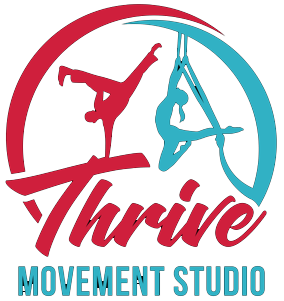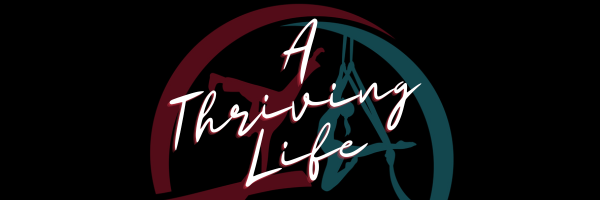 | Thrive Movement Studio |

CIRCO FEST: ARTISTIC INSPIRATION IN PUERTO RICO
The best circus festival you MUST attend
On Mixing the Ages...
One of the things I love the most about Latin America is how ages and generations come together. This is where Joel and I met; where we traveled as street performers for years. Celebrations include everyone - Grandma is dancing with the young kids and the emphasis is about everyone together. Throughout our travels, I was witness to a culture where the young and old do not just help each other, but value one another.
Circus is similar. While training can be an individual activity, we can still practice our own skills in a group space, allowing abilities and ages to come together and share the room. Our summer circus camp ranges from 5 year old newbies to older teens. The little kids are welcomed into this yearly ritual by the older kids with experience, who act as guides through the process. As a collective group, we meld the ideas of all ages, creating circus acts for a quirky and fun show. It is exciting to watch new students learn and find their footing, while observing seasoned veterans take on more challenging roles, as performers on stage and leaders off. Every summer I marvel at how good the kids are to each other and how we don’t see much division based on age or gender. I deeply wish our nation could come together and create as well as I am witnessing these kids do!
As I approach a milestone birthday, I am reflecting much about age and time and how youth and age have so much to offer one another. Both groups suffer from many assumptions and lack of respect, but as I have witnessed that this does not have to be the way. If we can step into play with open hearts and a smile at any age. Circus certainly has so many lessons to share…
On Working with Injury
I realize that I often mention working around injuries and the need to listen and be mindful of our bodies and their needs. I thought that it would be helpful to see what that actually looks like, so this month's blog post is more about the visual, less about the words.
Below, you will find the link to a Trapeze sequence I worked on this week. One clip is of the sequence uses my right arm, which has no injuries of note. The other clip features the same sequence, but using my left arm, which is over one year out of surgery for bicep tendon repair.
Honestly, my left arm feels pretty darn good, despite tightness in my chest and arm. To keep myself (and my recovering injury) safe, I made some modifications to my practice. For the parts of the sequence that felt like too much pressure, I stacked a mat so that I could use my legs for support and walk myself through it. This allows me to work on equalizing my two sides, without fear of overdoing it. Often, we tend to avoid our injured side, but I feel it's important to keep moving and listening to the allow the injury to slowly heal. For me, it's finding my way through gently, asking my body to do the work, but still taking care.
To watch my aerial adaptation video, please click here.
Costume Design and the Creative Process
During super long winter nights and short days, I find it to be a fantastic time to dive into the creative process. I spent this past December working on two custom costumes for a New Year’s Eve event. The client requested tree-inspired costumes and that one should be a quadruped; giving me the liberty to not be literal and let my vision guide the process.This project touched on so many things that I love about the creative process; giving new life to found and leftover materials, creative problem solving, experimentation and learning.
As the project unfolded, I was able to use a bunch of materials that I’ve had kicking around forever. I repurposed some leather pieces from the Collinsville axe factory that had been previously used as ax and Hammer handles. An old bra that fit horribly was adorned with the leather pieces, painted gold and affixed to the outside of the costume.
One challenge was how to attach the headpiece to the quadruped costume. I had made a large headpiece with ferns and antlers. Since the performer would be on all fours and looking down slightly, it had to be very secure to the head without tilting forward. I was also concerned it would be too heavy to wear for 9 hours, which includes performance time, but also set-up, makeup and breaks between sets. It took some thinking on how to attach this headpiece to the hood underneath without sacrificing look or performer comfort.
I wanted the base unitard of the costumes to be mottled and not super uniform, more like the natural world. I was concerned that dyeing them would produce a tie-dye look, which I didn’t want for these pieces. Dyeing the unitards and stilt covers also required some problem solving, testing and experimentation. I came up with the idea of putting the unitards in a paint straining bag so they’d be squished in there. It did work out quite well.
I find creative problem-solving to be a favorite part of my artistic process, whether it is in costume design or even my aerial work. Finding new ways to get into positions, different transitions and ways of connecting skills is exciting and there is a satisfaction in discovering a different way to think on your feet. Costuming supports my Circus work and is one of my favorite parts, largely because the creative process in aerial work feels similar to the process of making costumes: strategic thinking, exploration and play.
What is a Warm-up?
How the right warm-up impacts you core connection, stability, articulation and neuromuscular connection
On Working With What You Have... and Knowing When to Invest
Learn when to invest and when to do it yourself!
Why Do We Foster Creative Work?
The importance of foster creativity and our inner artist
Performances that make me want to watch more!
The qualities in a performance that keep us engaged!
Injury, curiosity and How to Move Forward
My healing journey post bicep tear and surgery
Batizado 101: Connection and Capoeira!
The traditions and experience of the Capoeira Batizado










